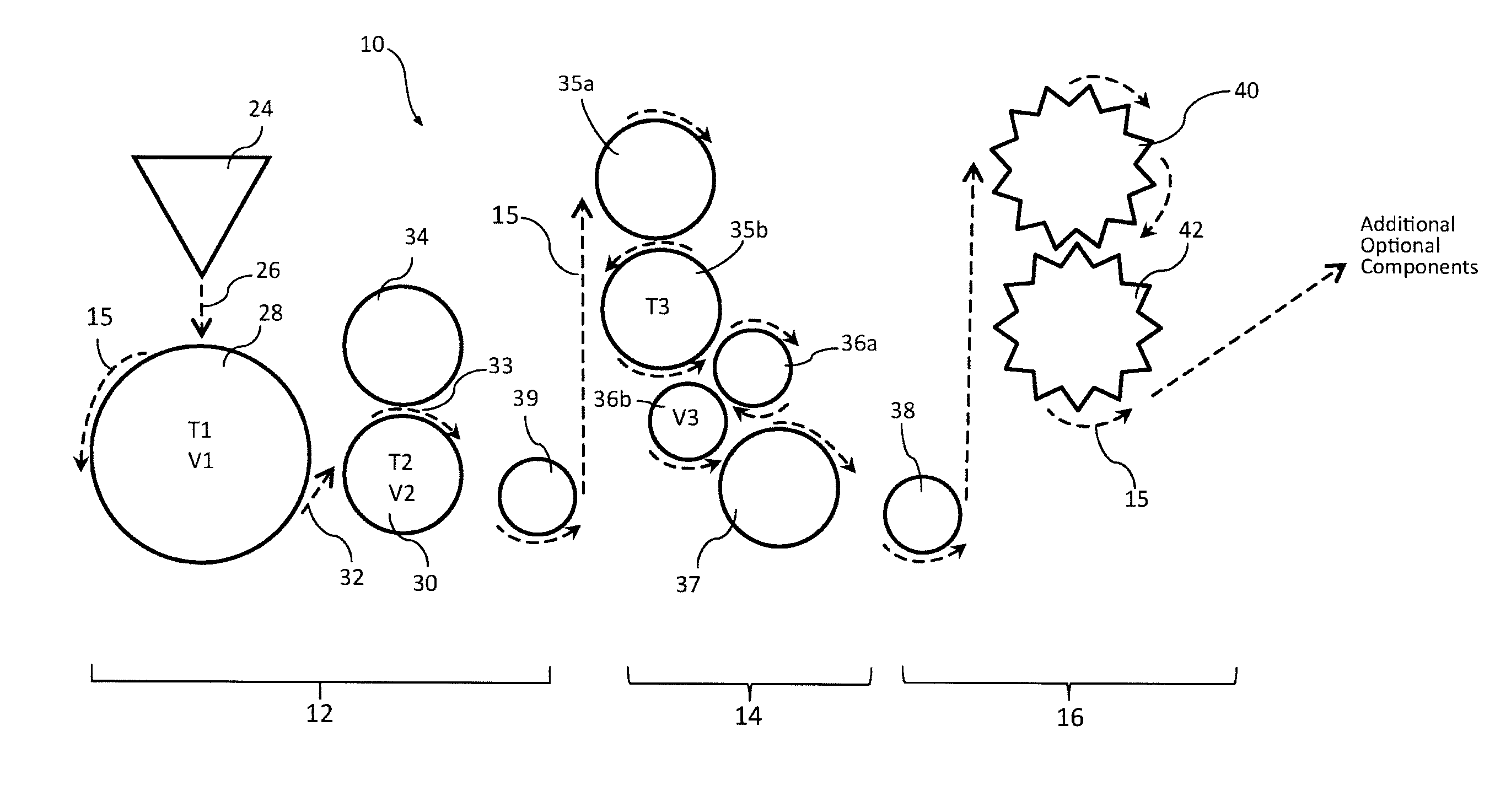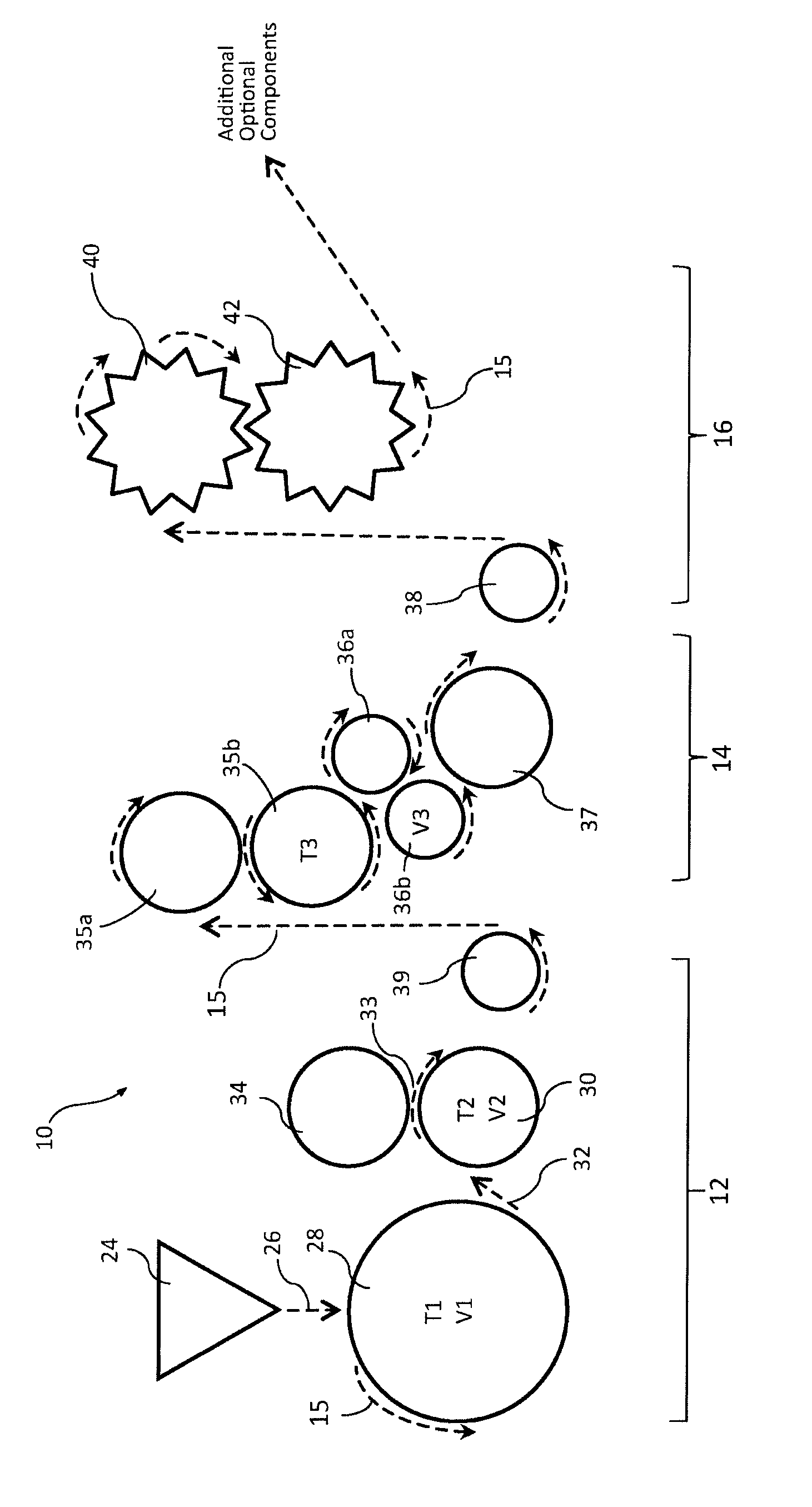Breathable and microporous thin thermoplastic film
a thin thermoplastic film, microporous technology, applied in the field of thin thermoplastic films, can solve the problems of uneven film thickness, limited polymer compositions that can be used, and formation of holes in films, etc., to achieve excellent tensile strength, breathability, and high basis weight
- Summary
- Abstract
- Description
- Claims
- Application Information
AI Technical Summary
Benefits of technology
Problems solved by technology
Method used
Image
Examples
example 1
[0095]A film was formed according to the previously-described method. The polymeric formulation by weight included 48% polyethylene, 45% calcium carbonate, 6% polypropylene and 1% processing aids. This formulation was melt blended and extruded as a monolayer at a temperature at about 260° C. and extruded onto a chill roller rotating at approximately 45.7 meters per minute and a temperature of 116° C. The film was stretched at a stretching roller operating at a velocity V2 of 149 meters per minute and a temperature of 88° C. It was then stretched at an MDO operating at a speed of 278 meters per minute and a temperature of less than 95° C. The formed film had a basis weight of 11.4 gsm and a CD load at break of 1.14 Newtons / cm. The cross direction elongation at break was 446%. In the machine direction, the load at break was 3.16 Newtons / cm. The machine direction elongation at break was 269%. The opacity was 59.4%, and no TiO2 was added. The water vapor transmission rate (WVTR) was 9,0...
examples 2 through 11
[0096]Using the method disclosed in Example 1, additional cast films were formed. The samples contained 1% processing aids, polypropylene and fillers as noted below, with the remainder of the composition comprising polyethylene. The physical characteristics of the films are shown in the Table 1. Unless otherwise noted, the films comprised 50% calcium carbonate and did not contain titanium dioxide.
[0097]According to Example 2, a three layer film was formed, wherein the skin layers comprised polyethylene with 4% polypropylene and the core layer comprised polyethylene with 33% polypropylene. The percentage of the thickness of the layers A / B / A was 15 / 70 / 15.
[0098]In Example 3, a monolayer film is formed comprising polyethylene, 11% polypropylene and 47% calcium carbonate filler.
[0099]In Example 4, a monolayer film was formed comprising 9% polypropylene. The ratio of V2 / V1 was 2.2 and the ratio of V3 / V2 is 2.0.
[0100]In Example 5, a monolayer film was formed comprising 16% polypropylene. T...
PUM
| Property | Measurement | Unit |
|---|---|---|
| pressure | aaaaa | aaaaa |
| temperature | aaaaa | aaaaa |
| temperature | aaaaa | aaaaa |
Abstract
Description
Claims
Application Information
 Login to View More
Login to View More - R&D
- Intellectual Property
- Life Sciences
- Materials
- Tech Scout
- Unparalleled Data Quality
- Higher Quality Content
- 60% Fewer Hallucinations
Browse by: Latest US Patents, China's latest patents, Technical Efficacy Thesaurus, Application Domain, Technology Topic, Popular Technical Reports.
© 2025 PatSnap. All rights reserved.Legal|Privacy policy|Modern Slavery Act Transparency Statement|Sitemap|About US| Contact US: help@patsnap.com


